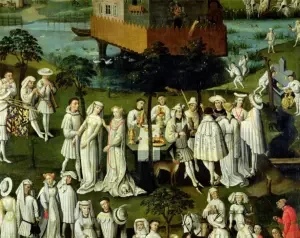Almost all serious winelovers will have heard of the 1395 ordinance of Philip the Bold (Philippe le Hardi), Duke of Burgundy—the ordinance that decreed the destruction of all Gamay vines planted in Burgundy. Philip famously called Gamay a “very bad and very disloyal” grape whose bitter wine made people ill and had ruined Burgundy’s reputation for fine wine. He ordered that all Gamay vines in the duchy should be cut down within a month.1
This ordinance has been understood in many ways. Some have seen it simply as a forthright statement that Gamay made poor wines and that Burgundy’s reputation as a producer of fine Pinot Noir wines had to be protected from it.2 Others have regarded it as a measure designed to protect owners of Pinot Noir vineyards from competition from the higher-yielding Gamay vines.3 (Philip’s ordinance might well have been self-serving in this respect, since he owned nearly 200ha [500 acres] of vines.4) The ordinance has even been portrayed as an ill-tempered, emotional reaction to Gamay wines; the duke “disliked it [Gamay] so much he tried to ban it entirely […]. One […] imagines the duke glowering at his writing desk, vassal to a king-size hangover.”5
More recently, historians have understood the ordinance in its political and economic contexts. Rudi Beaulant has emphasized its broader intent rather than its specific content, arguing that concern about the spread of Gamay was exploited by the duke as part of a more general attempt to increase his authority at the
This Article was originally published on World of Fine Wine






